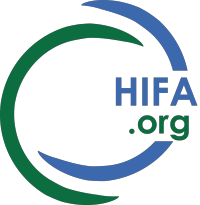Thank you Bridget for your message, (apologies that I inadvertently sent this through my account)
And thanks to your previous message on our sister forum HIFA, we are having a vigorous discussion about the issues raised. You can see the latest messages here: https://www.hifa.org/rss-feeds/17
Meanwhile here is a related new paper on stigma towards Zambian adolescent girls and young women (although it does not specifically address menstruation):
CITATION: Health worker perceptions of stigma towards Zambian adolescent girls and young women: a qualitative study
Caroline Meek, Drosin M. Mulenga, Patrick Edwards, Sophie Inambwae, Nachela Chelwa, Michael T. Mbizvo, Sarah T. Roberts, Sujha Subramanian & Laura Nyblade
BMC Health Services Research volume 22, Article number: 1253 (2022)
https://bmchealthservres.biomedcentral.com/articles/10.1186/s12913-022-0...
Abstract
Background
The high prevalence of HIV among adolescent girls and young women aged 15–24 in Eastern and Southern Africa indicates a substantial need for accessible HIV prevention and treatment services in this population. Amidst this need, Zambia has yet to meet global testing and treatment targets among adolescent girls and young women living with HIV. Increasing access to timely, high-quality HIV services in this population requires addressing the intensified anticipated and experienced stigma that adolescent girls and young women often face when seeking HIV care, particularly stigma in the health facility setting. To better understand the multi-level drivers and manifestations of health facility stigma, we explored health workers’ perceptions of clinic- and community-level stigma against adolescent girls and young women seeking sexual and reproductive health, including HIV, services in Lusaka, Zambia.
Methods
We conducted 18 in-depth interviews in August 2020 with clinical and non-clinical health workers across six health facilities in urban and peri-urban Lusaka. Data were coded in Dedoose and thematically analyzed.
Results
Health workers reported observing manifestations of stigma driven by attitudes, awareness, and institutional environment. Clinic-level stigma often mirrored community-level stigma. Health workers clearly described the negative impacts of stigma for adolescent girls and young women and seemed to generally express a desire to avoid stigmatization. Despite this lack of intent to stigmatize, results suggest that community influence perpetuates a lingering presence of stigma, although often unrecognized and unintended, in health workers and clinics.
Conclusions
These findings demonstrate the overlap in health workers’ clinic and community roles and suggest the need for multi-level stigma-reduction approaches that address the influence of community norms on health facility stigma. Stigma-reduction interventions should aim to move beyond fostering basic knowledge about stigma to encouraging critical thinking about internal beliefs and community influence and how these may manifest, often unconsciously, in service delivery to adolescent girls and young women.
Neil Pakenham-Walsh, Global Coordinator HIFA, www.hifa.org neil@hifa.org
Global Healthcare Information Network: Working in official relations with WHO

